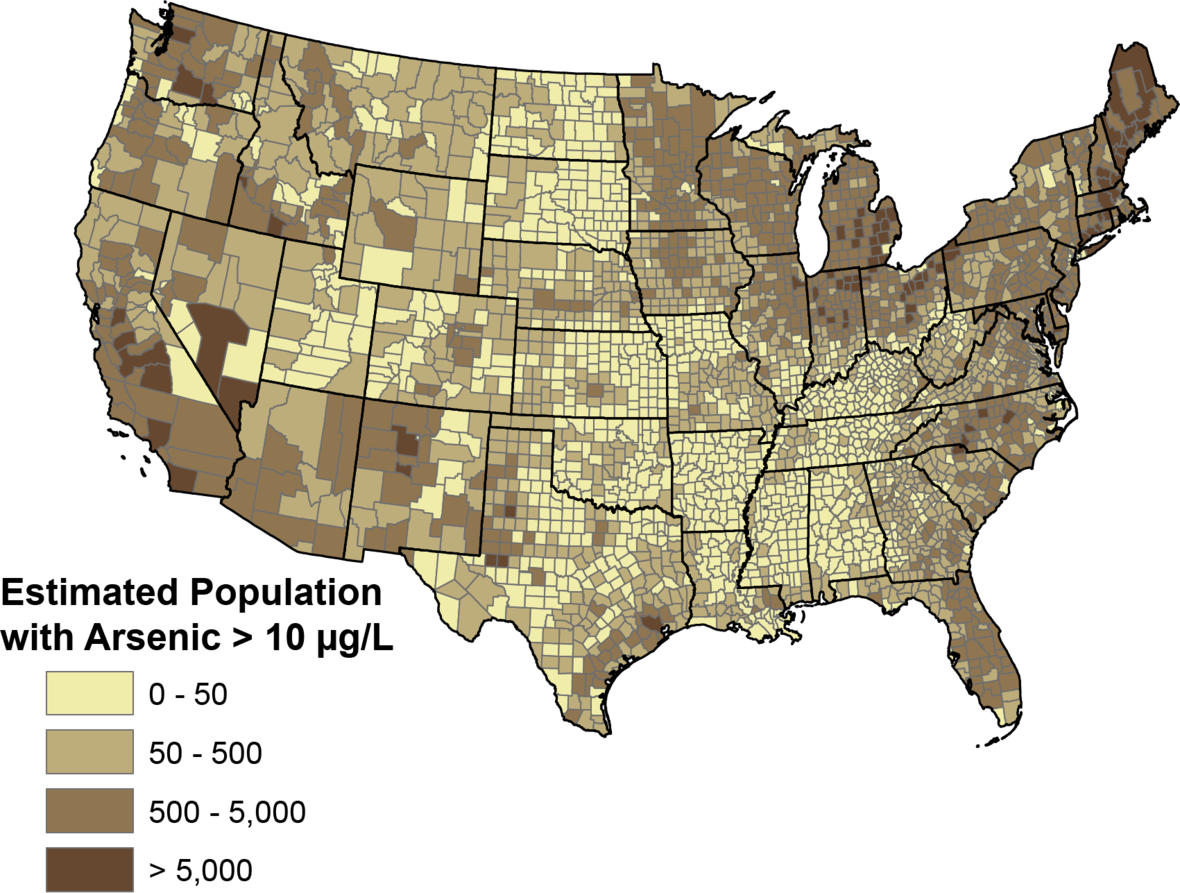USGS & CDC Estimate about 2.1 million people use wells high in arsenic
 December 21, 2017
December 21, 2017 It's common to run into arsenic in soils and groundwater here in Midwest. If you operate a well for your drinking water supply, get it tested.
Your state geological survey and local water monitoring council provide a lot of information on arsenic in drinking water - a great place to start for citizens with questions and concerns about arsenic in their drinking water. Here is a link to the Indiana Water Monitoring Council's arsenic pages.
 Xenon Geosciences, Inc. | Comments Off |
Xenon Geosciences, Inc. | Comments Off |  arsenic,
arsenic,  ground water,
ground water,  water resources,
water resources,  wells in
wells in  Arsenic,
Arsenic,  Hydrology,
Hydrology,  environment,
environment,  ground water,
ground water,  water resources
water resources 